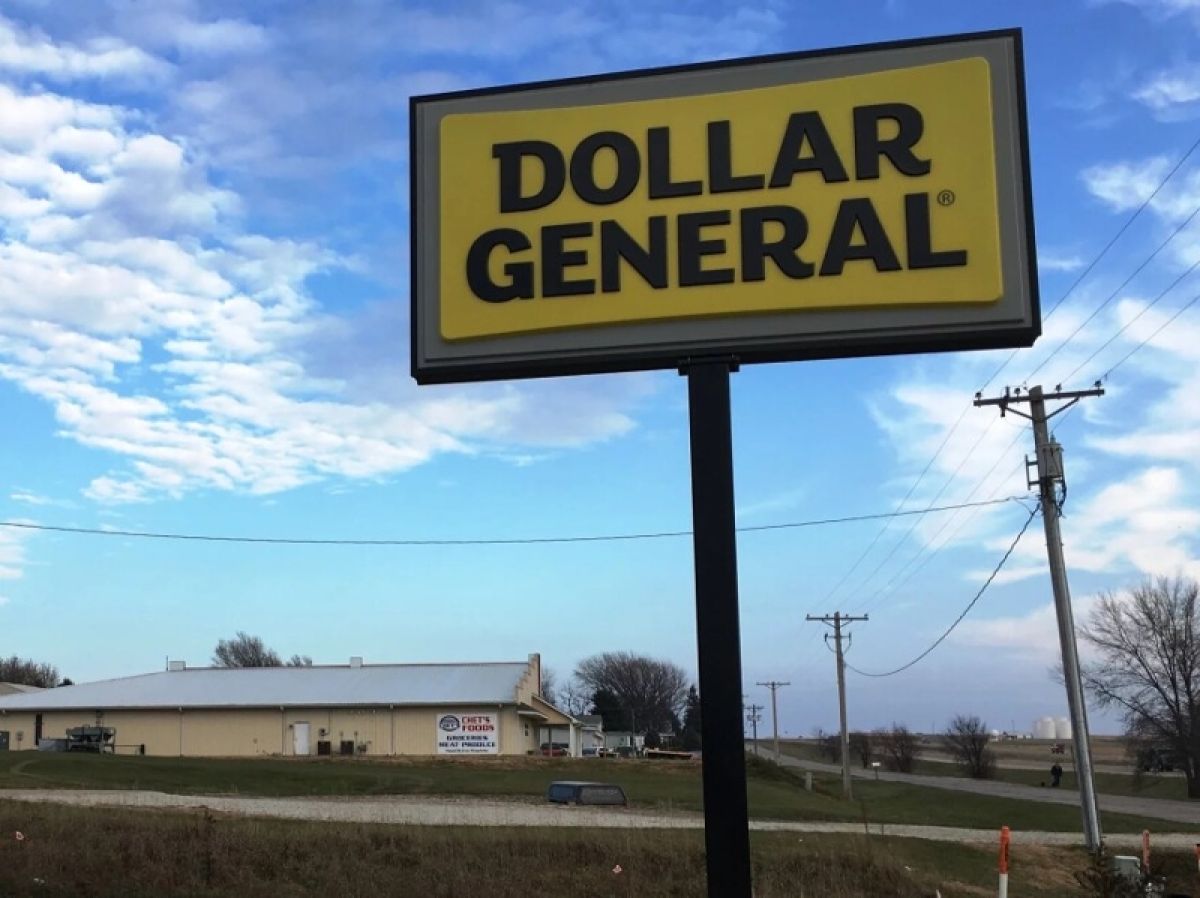
The Dollar General in Moville, Iowa, in a 2017 file photo. The locally owned Chet's Foods in the background closed and could not compete with the store despite having produce and fresh meats (Frank Morris / NPR)
Rural residents have fewer options to buy food and have to rely more on dollar stores and long drives for groceries, according to a new report from the U.S. Department of Agriculture.
The USDA released data last week that shows in rural areas across the country, there was a six-year period ending in 2015 that saw a 20% decrease in grocery, specialty food and convenience stores.
There was modest growth in dollar stores and superstores like Walmart over that same time period.
"The number of grocery stores has been declining in these (rural) counties, particularly after the Great Recession. These trends suggest that access to grocery stores has been declining over the last 25 years,” the report stated.
And the trends are continuing now, experts say.
“Anyone who has spent any time in rural areas is not surprised by this data,” said Bill McKelvey, a program coordinator with the University of Missouri’s Interdisciplinary Center for Food Security.
McKelvey said consumer demand and shopping preferences are a big part of explaining the trend.
“Rural residents may prefer to travel further in order to go to a store that has groceries, household items, hardware and everything else,” McKelvey said.
But that does create problems, both in the local economy and in the quality of food that is available in rural areas, he said.
“Low-income residents are disproportionately affected by these trends,” McKelvey said, “because they may not be able to afford a regular long drive to a superstore or may not have access to transportation at all.”
Jennifer W.S. Paulson, executive director of Food Works, a southern Illinois nonprofit that works with farmers and rural areas, said the data reveals a strange paradox in rural communities.
“In these very rural areas, which often have really beautiful climate and wonderful soils, and you can see farms for miles and miles, but none of them are growing things that people can eat,” Paulson said.
Paulson said the trend also means less access to fresh fruits and vegetables for rural residents, because dollar stores don’t carry them and superstores often ship in food from long distances.
“We need to make it possible, affordable and sustainable for small farmers to grow food that they can sell to people in rural areas,” Paulson said.
She said farmers markets and community-supported agriculture cooperatives are examples of making that happen, but it will take changes in laws and buy-in from rural communities to make it affordable and accessible.
McKelvey said there aren’t any easy answers.
“This is a complicated and nuanced problem, and each rural community will have to figure out what they want and what kinds of stores they are willing to support,” he said. “For some places it may be a community owned, full-service grocery store. And for some, the local dollar store and 45-minute drive to a superstore may be what they need and want.”













